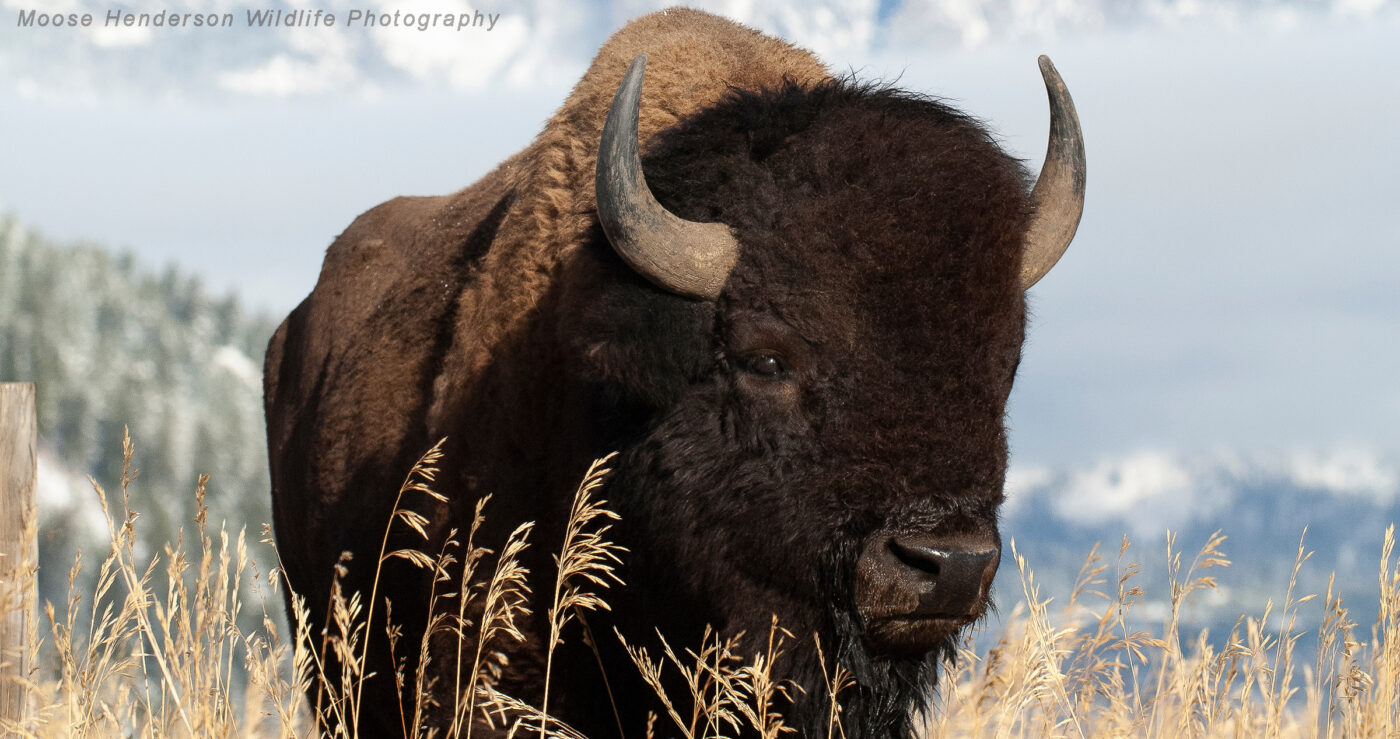
PRESENTS
Primeval Bisons
Written by Katelin Kukk
Photographs by wildlife photographer Moose Henderson of St Petersburg, FL
Weighing as much as a whopping 2,400 pounds and a height of 6.5 feet, the American Bison (Bison bison) is the largest terrestrial animal in North America. Typically, bulls weigh in at 1600 -2000 pounds, while females are noted to weigh 40-50% less. These beasts have survived not only throughout prehistoric times but a massacre during the 19th century reduced the numbers of bison drastically. Between 1870 and 1890, the number of bison dropped from approximately 8 million to less than 1,000. Their perseverance has made them quite resilient to the ever-changing environment. They have evolved in multiple ways to withstand some of the harshest weather in North America.
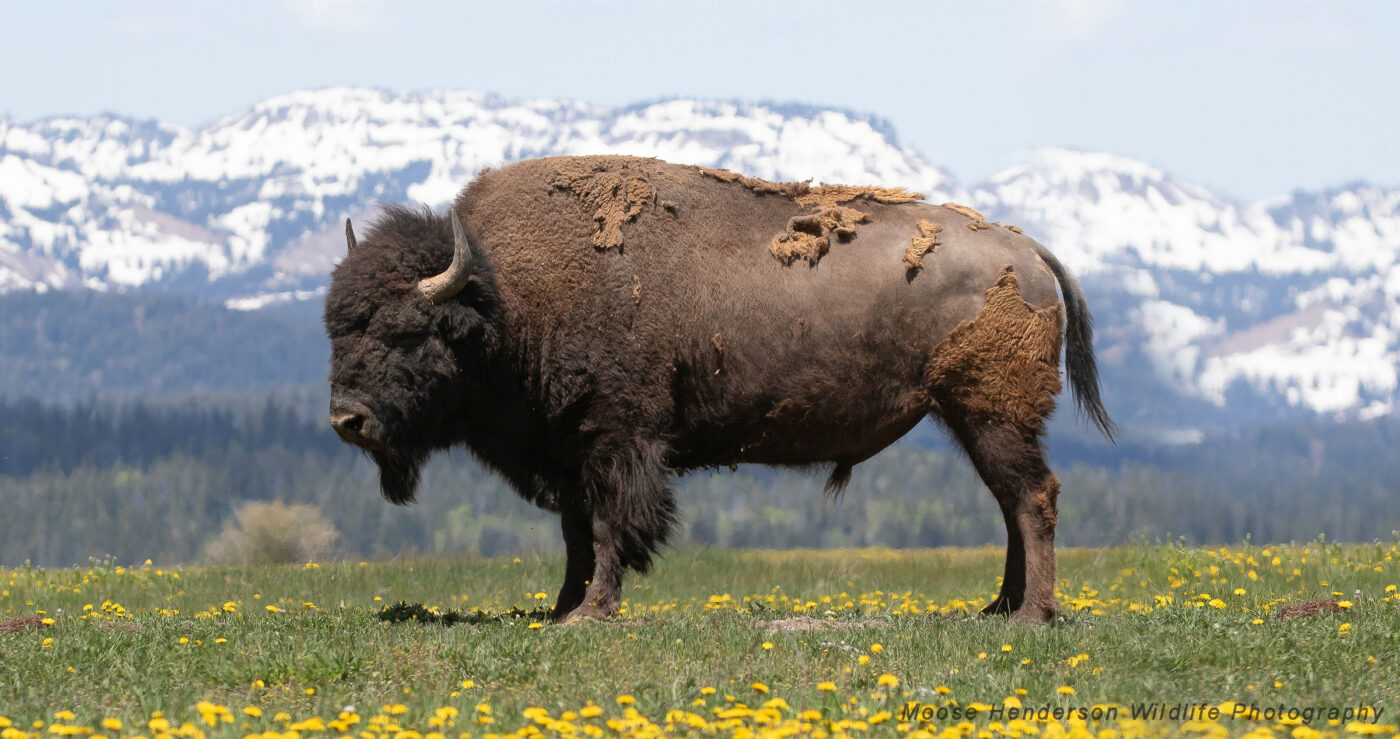
Appearance
The American bison have a unique look to them, with a large, muscled hump over their front shoulder and two short hollow horns that sit upon both males and females’ heads. This adaptation has allowed these primeval survivors to forage in grasslands covered in at least four feet of snow. To protect themselves from harsh winters, these animals develop a coat so thick and shaggy that it is said that snow will not melt from the heat of the bison’s skin. The bison’s neck and face have the most hair to protect them and retain heat during strong, windy blizzards. Their unique and insulating fur sheds off in large heaps during the spring to keep them cooler during the warmer weather.
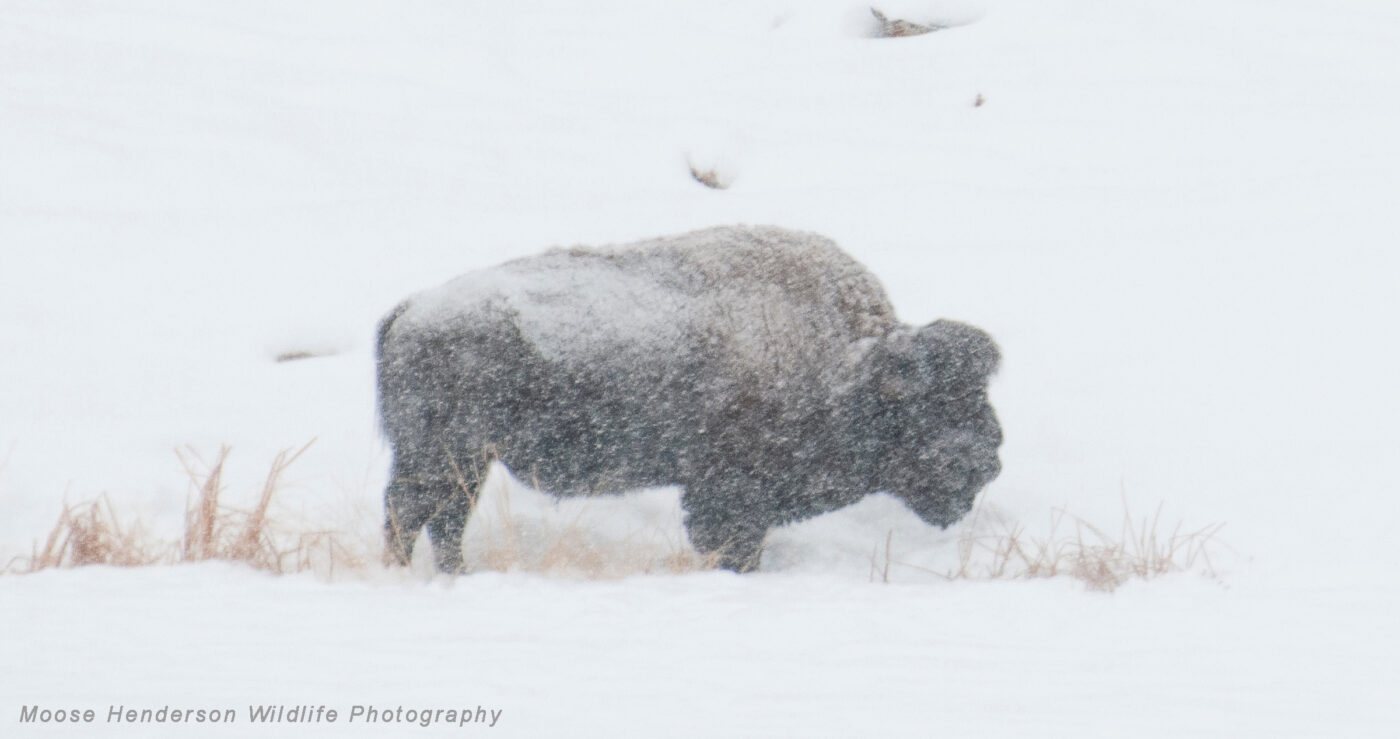
Behavior
Bison are very social animals that live within bands. A band is a small group of bison, either of females and their offspring or a bachelor herd. The dynamics of these bands are affected by a multitude of factors including age, sex, or seasonal changes. Bison communicate with each other using various grunts, snorts, and bellows. They also communicate with body language; a calm and stationary tail usually means that they are relaxed but a tail that is standing straight up may be an indication of an impending charge. American bison’s behavior is unpredictable overall, so it is advised never to get close to these animals.
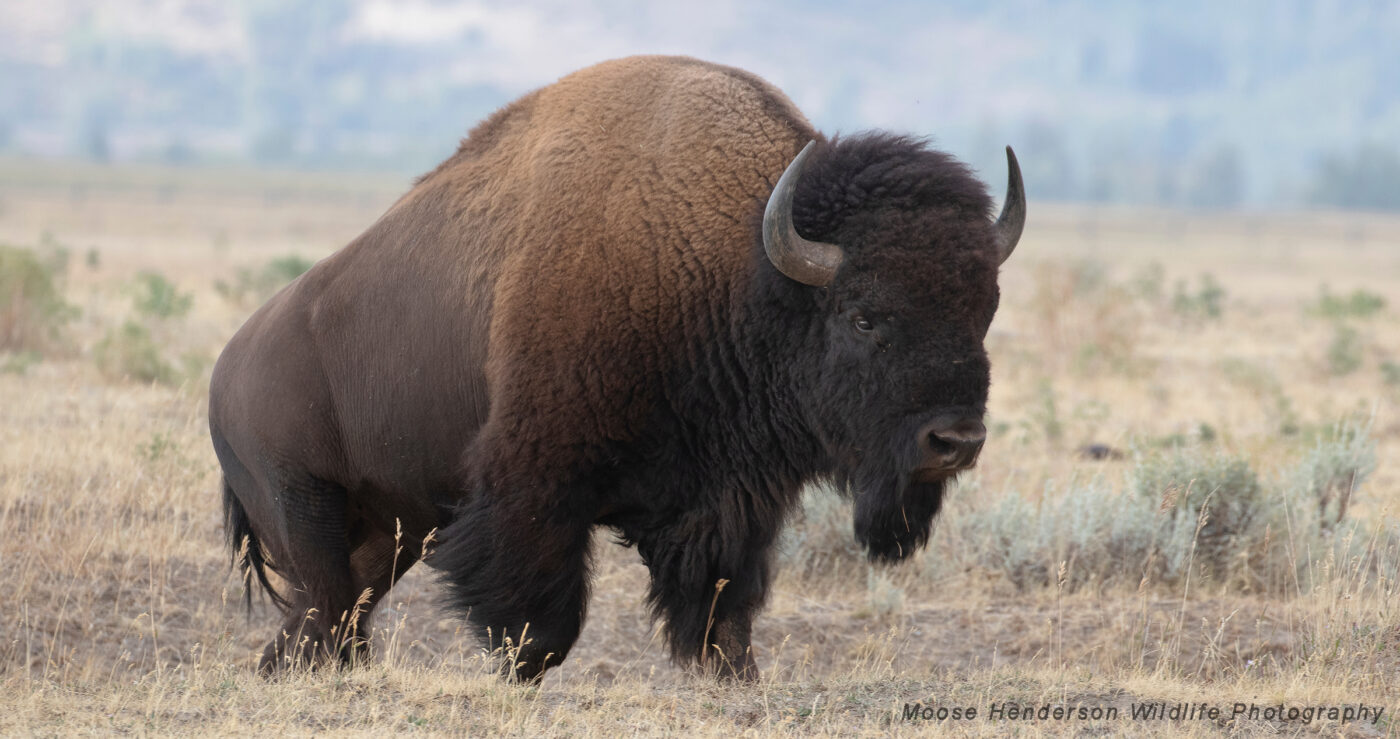
History
The American bison have not had an easy past. When millions of bison roamed North America, they were an important aspect of native tribal culture for food, clothes, tools, and even spirituality. Later came the arrival of European settlers and the beginning of large-scale commercial bison hunting. During the westward movement of the 19th century, well over a million bison were killed each year for both sport and meat threatening the population with extinction. Specifically, Buffalo Bill killed upwards of 4,000 bison to supply railroad workers but also to deprive the natives of their main source of food. In 1889, less than 1,000 bison were living in North America. Luckily, conservation efforts were made, and populations are much higher today.
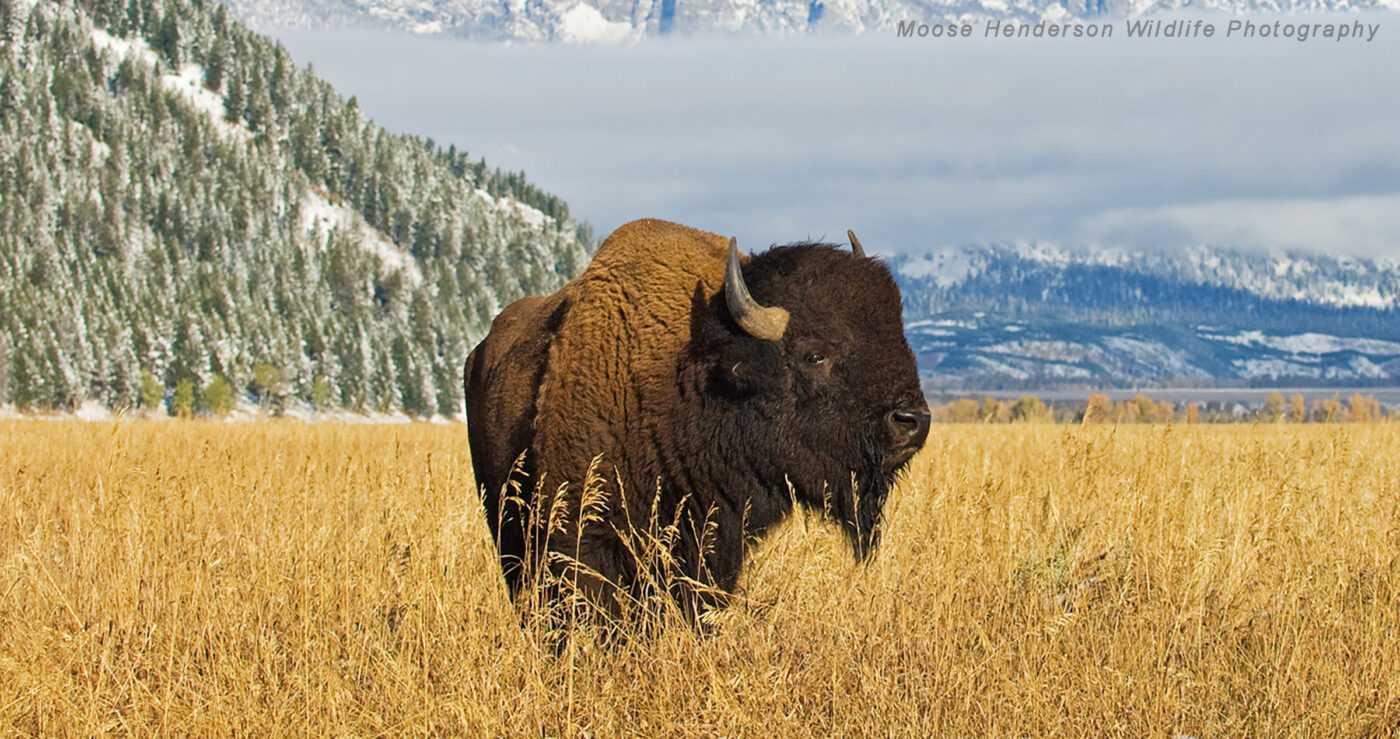
Conclusion
Bison bison have been very resilient to the hardships they faced throughout their existence. Over the last 220,000 years, these primeval survivors have adapted quite a bit from their ancient relatives. Conservation efforts are still being made to protect these incredible beasts; an effort that was started by Theodore Roosevelt, who formed the American Bison Society in 1905. Today, the American Bison is the national mammal of the United States and will hopefully continue to thrive.
To view this and other articles on Nature and the Environment’s official website, click here:
– – –

NatEnvo was formed by BioTriad Environmental, Inc. to provide entertaining and informative media while keeping the wonders of nature in the public eye.

Spectacular creatures roamed the earth in the time long before the history of man. Species alive so far in the past, the only traces we find today are bits of rock and stone. Ages faded to dust in the wind. Yet there are those who remain. We call them Primeval Survivors. Do these remnants of the past hold the secrets of the ages?


